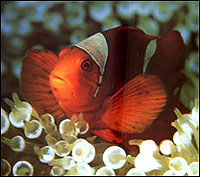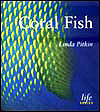Life on the reef
Linda Pitkin
Introduction

Coral reefs occupy less than 1 percent of the Earth's crust, but they are extremely important centres of biodiversity. They support an immense diversity of fishes throughout the tropics, including over 4,000 species, which range in size from a giant grouper, 3 m (9.8 ft) long, to a minute goby, barely 1 cm (0.4 in) in length. The appeal of many coral fishes, such as butterflyfishes and angelfishes, lies in their colour and beauty. Tiny damselfishes, and others that may be less conspicuous as individuals, shimmer in lively swarms around the corals. The fascination of coral fishes, however, goes far beyond first impressions; closer observation reveals unique and complex lifestyles and behaviour.
In this seminar, Linda Pitkin--award-winning underwater photographer and entomologist at The Natural History Museum, London--explores some of the varied specializations that enable coral fishes to live in every part of the reef environment, the means by which they derive food and shelter from the reefs, and their interactions--often fiercely territorial--in a densely populated living space. Many coral fishes are secretive, hiding in holes or burrows, or lying camouflaged on the sea-bed; others hover openly in the water column above. Their impact on coral reefs is immense, whether they graze the fine seaweeds growing on the reef or prey on various reef-dwelling animals.
As well as fishes, humans have also had a huge impact on coral reefs, often in a destructive form. In the final session of this seminar, Linda Pitkin explains how coral reefs and their inhabitants are vulnerable to marine pollution and to the effects of climate change.

Coral reefs throughout the tropics support an amazing diversity of fishes--from eye-catching butterflyfishes, which hover around the corals, to secretive gobies, and venomous scorpionfishes which lie camouflaged on the sea bed. The appeal of coral fishes lies not only in the exquisite beauty for which some are renowned, but in their fascinating lifestyles and behaviour. Whether brightly coloured or plain, their natural history never ceases to enthrall.
With over 100 of her award-winning photographs, Linda Pitkin explores the varied lifestyles of these fishes--the means by which they find food and shelter on the reef, and their complex interactions. She describes the partnerships of anemonefishes and sea anemones, the grazing activities of parrotfishes and surgeonfishes, and the lifestyles of many other fish that live on coral reefs, huge predatory groupers and even sharks among them.
Topics
- Coral reef communities
- Fish food: The feeding behaviour of coral fishes
- Reef society: The social behaviour of coral fishes
- Conservation: Managing the resource
About the author
Linda Pitkin is a former biologist at the Natural History Museum, London, with two main fields of interest. Her professional specialization is the research of moths, while her greatest passion is marine life. Her underwater photographs have won many national and international awards and she is the author of The Living Sea - a Photographic Exploration of Life in the Sea (1995) and Under Northern Seas (1997). In 2003 she became a member of the Women Divers Hall of Fame – a society dedicated to women who shape the world of diving.
Toolbox

Our fossil insect collection includes Rhyniognatha hirsti, the world's oldest fossil insect, dating back some 400 million years.